Complete Guide to Home Water Filters
- by Ryan Moreau / updated: April 23rd, 2024
Thinking about buying a water filtration system for your home? In this step-by-step guide, we’ll help you determine the the best water filtration system to produce safe high quality drinking water for your home and family.
Let’s get started!
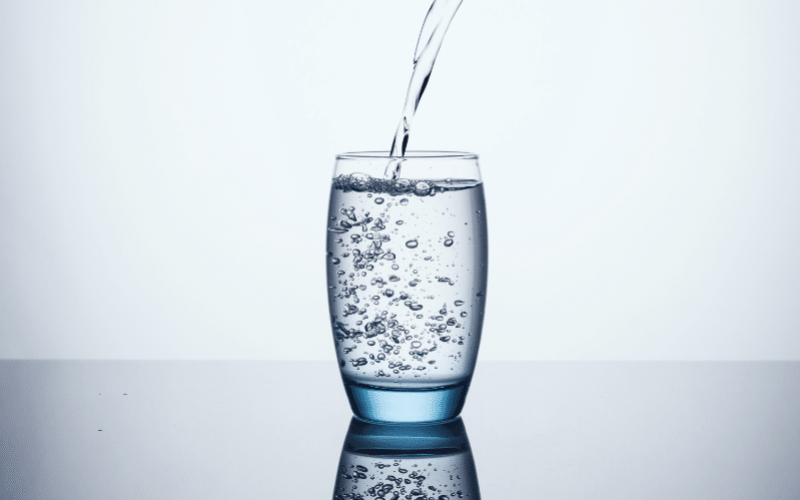
Important Questions To Ask
Choosing a water filtration system that meets your needs can seem daunting. Filter technology has expanded over the years, and the number of options on the market can be overwhelming. Several companies are competing for your business, and it can be difficult to determine which ones to trust. When thinking about how to organize this guide, we decided to break it down into the three most important questions to consider when buying a water filtration system. Click on each section or sub-section below if you want to skip ahead!
In This Guide
Do You need a Water Filter?
In the United States, we are fortunate to have some of the highest quality water in the world right out of our tap. The first and most important question you should be asking is, do you even need a water filter? If you are reading this guide, this is a question that you likely need help answering. There are many reasons that people buy water filters. In general, people who purchase water filtration systems fall under one of the three categories detailed below.
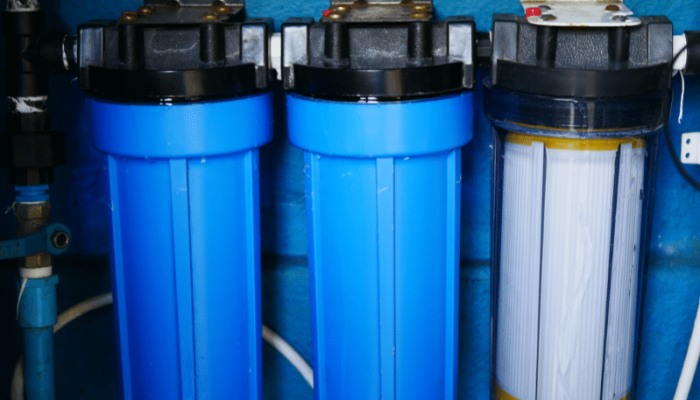
Remove Water Contaminants
Water Contaminants?! What water contaminants? I know, know…. we just covered how fortunate we are to have such amazing water quality here in the United States. While this is true by most standards, this does not mean our water is entirely contaminant-free. Whether you have city water or use a private well, you should be aware of the potential for contaminants in your water. The EPA regulates and provides contaminant level guidelines for over 96 contaminants in public water systems. These contaminants can end up at your tap in a variety of ways. The good news is most of them can be removed relatively inexpensively with a simple water filtration system. In this guide, we’ll help you determine if your water has any of these contaminants and show you how to remove them!
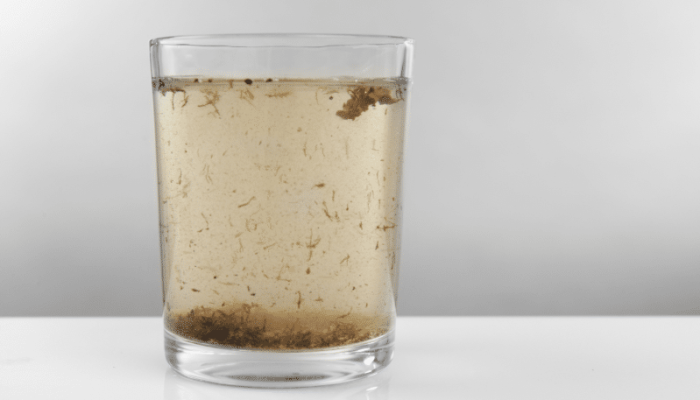
Improve Taste
Not all contaminants found in your water are directly hazardous to your health. However, many contaminants in drinking water can make your water taste off! Do you find that your water tastes like a swimming pool or has a noticeable chemical, earthy, or metallic taste? You may even notice a rotten egg smell or a fishy taste if you have well water. Not only is this hard to drink, but some of these bad tastes can indicate that your water is unsafe to drink! If you are having a hard time stomaching your water, some simple filtration options are available.
Protect Plumbing and Appliances
Water has varying levels of dissolved minerals depending on where you live. These minerals, such as calcium, magnesium, sodium, and potassium are essential to a healthy diet. However, some of these minerals, specifically hardness-related minerals like calcium and magnesium, may leave troubling deposits that can damage your household plumbing and appliances. These deposits will appear in your shower and on your glassware as a white film. They form hard deposits in your water heater, dishwasher, and other household appliances, reducing their efficiency and lifespan. Hard water can also cause dry skin and hair and make it difficult to get laundry clean.
You may also live in an area with very low hardness and mineral content. Water with low mineral content can be very corrosive, causing damage to plumbing that can lead to water leaks in your house. Corrosive water also poses a significant health risk as harmful metals from the plumbing can leach into your water.
Those affected by hard or corrosive water generally need a whole home water filtration system to protect their plumbing and appliances.
What's In Your Water?
Now that you know why people purchase water filters, let’s find out if you need one! To determine if you need a filter, you must first understand what’s in your water. Below, we will walk you through three ways to determine your water quality.
TapTool Water Quality Report
The best way to get started is to use our TapTool application and enter your zip code and water source (city or well). TapTool combines local drinking water and pollution data to generate a comprehensive water quality report unique to you. The data provided in TapTool will help you determine areas where your water may be deficient or at risk for contamination. You can find out more about how we gather data for TapTool here.
Consumer Confidence Reports
If you’re like us, you prefer to have multiple sources of information before making any decisions. Another great resource is your public water system’s Consumer Confidence Report (CCR). The CCR is a water quality report that the EPA requires your public water system to issue annually. Unfortunately, there is no standard for the formatting and data presented in these reports. Finding these reports can also be difficult as the EPA does not maintain a working database for them. The best way to find them is by simply googling your public water system name or city name followed by “Consumer Confidence Report” or “Water Quality Report.”
You can find your public water system name by entering your zip code into TapTool. The most complete CCRs will show you various contaminant levels in your water and note any recent violations. Less complete CCRs typically have very little information and will only report if the utility is in compliance without sharing actual data. Depending on where you live, the CCR may or may not be an excellent source of information.
Water Testing
The only way to truly know what’s in your water is to test your water right out of the tap. You can do your own testing at home, or you can send water samples to an outside lab to have more comprehensive testing done. SimpleLab is an excellent testing resource that sells sample kits for city and well water. If you are on well water, we recommend testing your water once a year. If you prefer to do your testing at home, check out our water testing guide. The testing guide will walk you through tests you can do inexpensively at home and also cover more comprehensive lab testing. At-home tests can help you understand the general characteristics of your water and can give you an idea of contaminant potential. Unfortunately, not all tests can be done at home, and for the complete picture, you will need to send off samples.
What Type Of Water Filter Should You Get?
Now that you know what’s in your water, it’s time to decide what contaminants you would like to remove or reduce. Your TapTool report provides filtration recommendations for the specific contaminants in your water, so make sure to look if you haven’t already. In this section, we will go into greater detail on each type of home filter and what they are used for.
NSF Certifications
Before purchasing a water filter, it is essential to determine whether the filter will remove the specific contaminants it says it will. This is where NSF Certifications come in. An NSF certification allows manufacturers to choose which contaminants their product will reduce, and NSF independently verifies that their filter will do what it says it will do. Because these standards allow manufacturers to certify their products to reduce various contaminants, it’s important to check the packaging for both the standard name (such as NSF/ANSI 53 or NSF/ANSI 58) AND a claim for specific contaminant reduction. Once you understand what is in your water and what you want to remove, you must select a filter certified by NSF to remove that contaminant.
Below is a summary of all NSF Certifications for home water filtration systems that you can use as a reference.
NSF/ANSI 42
Reduction of aesthetic contaminant concerns such as chlorine, taste and odor, chloramine, particulate, iron, manganese, zinc and total dissolved solids (TDS).
NSF/ANSI 44
Water softener certification for removal of calcium and magnesium hardness.
NSF/ANSI 53
Over 50 health-related contaminant reduction claims. See the manufacturer’s specifications for specific contaminants.
NSF/ANSI 55
Ultraviolet treatment systems kill bacteria, viruses and cysts.
NSF/ANSI 58
Reverse osmosis (RO) water treatment systems that remove a wide range of contaminants.
NSF/ANSI 62
Distillation systems that remove a wide range of contaminants.
NSF/ANSI 177
Shower filters that remove chlorine and other contaminants from shower water
NSF/ANSI 244
Bacteria and virus removal for public water systems in the event of water contamination resulting in a boil order.
NSF/ANSI 401
Removal of 15 specific contaminants related to prescription drugs, over-the-counter medications, herbicides, pesticides and chemical compounds.
NSF/P231
Removal of bacteria, viruses, and cysts.
NSF/P473
Remove per- and polyfluoroalkyl substances (PFAS) from drinking water.
NSF/P477
Reduction of microcystin
NSF/JWPA P72
Reduction of iodine
In the next section, we’ll review each type of filter and all the possible certifications you should look for based on the contaminants you would like to remove. Please note not all filters of the same type will always have the same certifications.
Activated Carbon
Activated Carbon Filter’s are the most common water filter homeowners use. These filters are constructed using either granular activated carbon or a carbon block. Water is passed through a cartridge filled with this carbon material, and contaminants are removed via adsorption. Carbon filter’s are often used to improve the taste and odor of water by removing chlorine, heavy metals, and contaminants that can contribute to poor taste and smell.
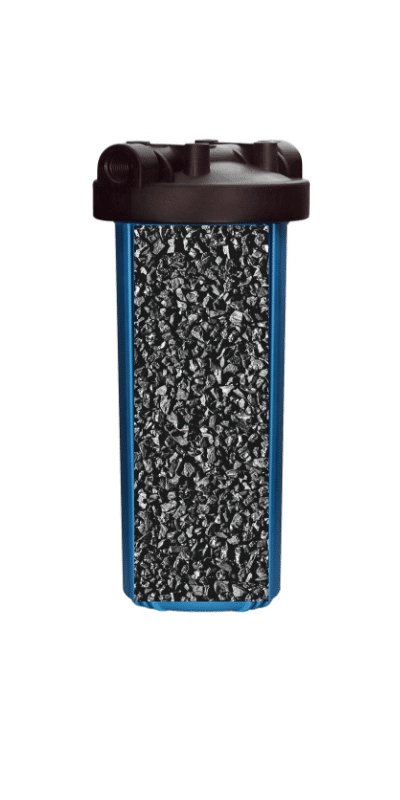
Filter Cartridge with Coconut Shell Carbon
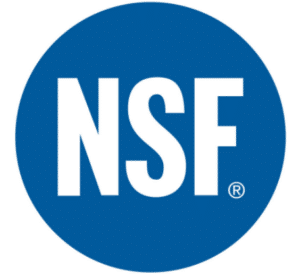
Certifications
Minimum: NSF/ANSI 42, 53
Others: NSF/ANSI 177, 401, P473, P231, P473, P477, JWPA P72
Costs
.
Whole Home Systems: $500 – 5,000
Point-of-use Systems: $50 – 500
Companies
Aquasana, Brita, Pentair, Apec Water Systems, Berkey, Clearly Filtered, Springwell, WaterDrop

Filter Cartridge with coconut shell carbon.
Installation Options
Under-Sink, Faucet, Fridge, Countertop, Shower, Whole Home
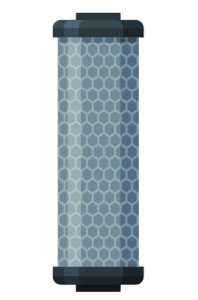
Replacement Life
Point-of-use: 3 – 6 months
Whole Home: 5 – 10 year
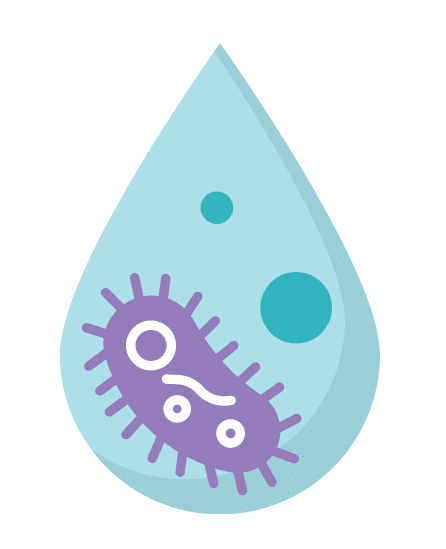
Contaminants Removed
If you have decided a carbon filtration system is right for you, check out our Carbon Filter Buyer’s Guide for a more detailed review of specific systems.
Reverse Osmosis
Reverse osmosis (RO) systems are the best option for maximum contaminant removal. These filters remove 95-99% of the dissolved salts (ions), particles, colloids, organics, bacteria and pyrogens from your drinking water (although an RO system should not be relied upon to remove 100% of bacteria and viruses). Contaminants removed from reverse osmosis are removed via a reject stream that needs to be plumbed to a drain when installed. Due to the low flow of the purified water, RO units will typically come with a 2-5 gallon storage tank that will take anywhere from 1-3 hours to fill.
Most RO systems will come with both a sediment and carbon pre-filter to extend the life of the RO filter. The sediment filter removes large particulate matter that can plug the filter membranes. The carbon filter removes chlorine as chlorine can damage RO membranes and drastically reduce the filter life. Since RO systems remove nearly all dissolved solids in your water, they also remove essential minerals naturally occurring in your water. Many RO systems come with remineralizers to add these minerals back into your water to improve the pH balance and water alkalinity for healthier water. When buying an RO system, buying a system equipped with remineralization is best to avoid having corrosive, mineral-deficient water.
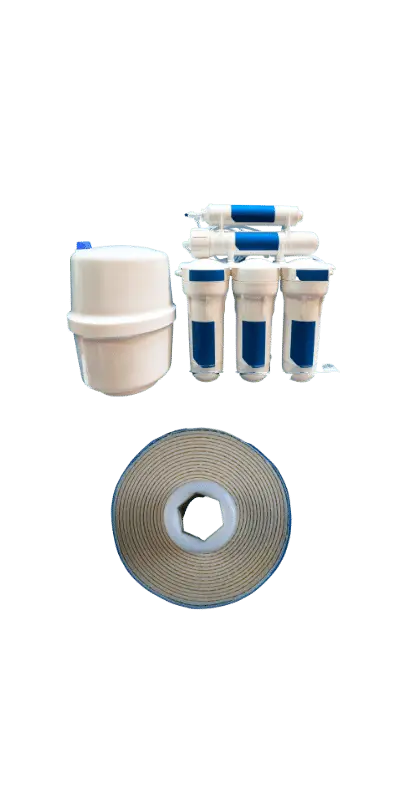
Typical RO Filter set-up with cross section shown.

Certifications
Minimum: NSF/ANSI 42, 53, 58, 401
Others : NSF/ANSI 177, P473, P231, P473, P477, JWPA P72
Costs
.
$200 – $1000
Companies
Aquasana, Pentair, Apec Water Systems, Berkey, Clearly Filtered, Springwell, WaterDrop

Typical RO Filter set-up with cross section shown.
Check out our RO product guide for a more detailed review of systems.
Water Softeners
If you are having issues with water hardness you may need a water softener. Water hardness can cause deposits in your plumbing and appliances, drastically reducing their life. Depending on where you live, signs of high water hardness can be obvious and appear as white water spots in your shower, glassware, or household plumbing. High hardness can also show up in not-so-obvious ways, such as difficulty getting laundry clean and dry hair and skin. Hardness issues are typically found in the mid-west and in public water systems that use groundwater as their source of water. Water softeners are an effective way to remove hardness ions that cause these issues.
Water softeners work using cation exchange, removing calcium and magnesium hardness and exchanging them with sodium or potassium ions. If you have problems with water hardness, you will want to remove the hardness at the source before your water heater, as hardness deposits are most likely to form on the hottest surfaces within your house.
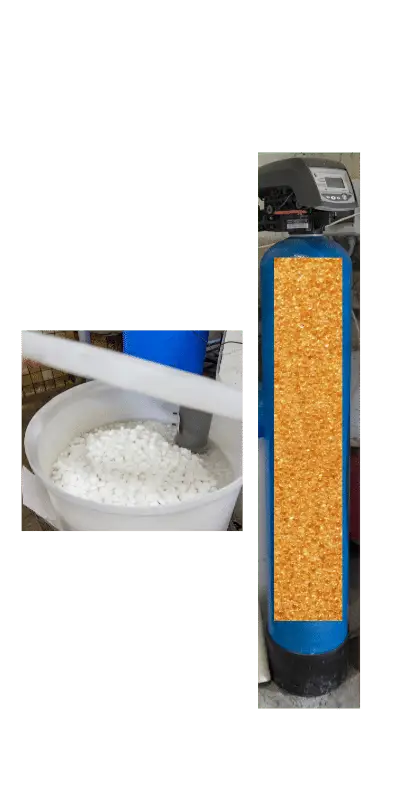
Softer + resin and brine tank

Certifications
Minimum: NSF/ANSI 44
Costs
.
$500 – 6,000
Companies
Pentair, Apec Water Systems, Springwell

Softer + resin and brine tank
Installation Options
Whole Home

Replacement Life
Resin change out every 10 years

Contaminants Removed
Calcium and Magnesium Hardness. Up to 5 ppm iron
Check out our whole home filter guide for a more detailed review of systems.
Salt Free Water Softener (Conditioner)
Another treatment option for hard water is a salt-free water softener or water conditioner. Water conditioners do not remove hardness ions from the water; instead, the water hardness minerals are altered through template-assisted crystalization. These altered minerals do not form deposits on surfaces within your home. In this process, water flows through a bed of polymeric beads, turning dissolved hardness into microscopic crystals that remain in solution without forming scale deposits in your home. The advantage of this process over traditional softening is that no regeneration is needed. Because of this, the water consumption of a water conditioner is much less, and you do not have to use salt or connect the unit to a drain.
In some areas of the US, water softeners are not allowed due to high chloride content water discharge from the regeneration and backwash step. Typically, these areas experience drought, and they regulate water softeners to prevent contamination of their water source with this high chloride content water. Unlike softening, this process does not remove calcium and magnesium from your water, which is an additional health benefit. One disadvantage of no-salt systems is they’re not as effective in places where water sits, like in your water heater.
Another issue is that saltless water conditioners don’t work equally well in all conditions or for all systems. For instance, salt-free conditioners generally should not be used with well water. Also, the types of contaminants you have in your water, which can vary widely from one municipality to another, can affect the operation of your system.
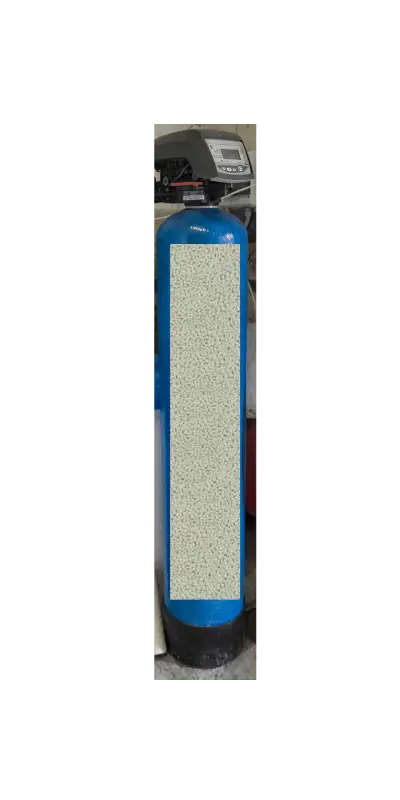
Water Conditioner + resin

Certifications
No NSF Certification exists. Look for DVGW-W512
Costs
.
Whole Home – $500-$3,000
Companies
Aquasana, Pentair, Apec Water Systems, Clearly Filtered, Springwell

Water Conditioner + resin
Installation Options
Whole Home

Replacement Life
5 – 10 years

Contaminants Removed
Magnesium and Calcium hardness altered to prevent deposits
Check out our salt free water softener product guide for a more detailed review of systems.
Acid Neutralizer
Acid neutralizers are filters designed to reduce problems associated with low pH water. The primary concern with low pH water is corrosion within your distribution system and household. Corrosion causes harmful metals to dissolve in your water, which can lead to undesirable health effects. An acid neutralizer prevents this corrosion and helps protect against metallic-tasting water, leaks, corroding pipes, shortened water-using appliance lifespan, and staining on your clothes and sinks. Acid neutralizer’s work by using a filter media such as calcite. When water flows through the filter, a portion of the calcite is dissolved, raising the water’s pH, alkalinity, and mineral content and reducing the water’s corrosiveness.
You can expect a slight increase in calcium hardness after the water passes through a calcite filter. The levels of hardness dissolved in the water after filtration is usually not a cause for concern because anyone who needs an acid neutralizer usually has very low hardness levels to begin with.
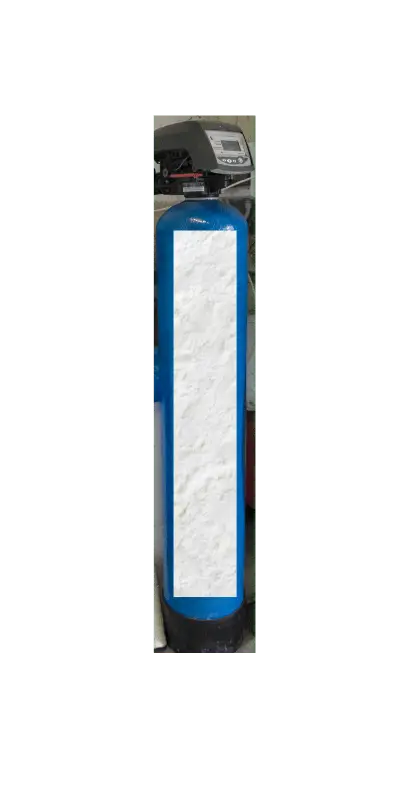
Neutralizer and calcite filter material

Certifications
NSF/ANSI 372. NSF 60 Certified Media.
Costs
.
Whole home: $500-3,000
Point of use: $50-200
Companies
Pentair

Neutralizer and calcite filter material
Installation Options
Whole Home, point of use

Replacement Life
Whole Home: 5 – 10 years

Contaminants Removed
Prevents corrosion and corrosion related contaminants such as heavy metals.
UV Disinfection
UV disinfection systems are used to treat for microorganisms such as bacteria and viruses. These systems are typically used on private wells that are susceptible to growth of these microorganisms. If you are on city water UV systems are usually not necessary as your water is chlorinated to prevent biological growth. However, if you live an area that experiences frequent boil orders due to microbio contamination you should consider installing a whole home UV system.
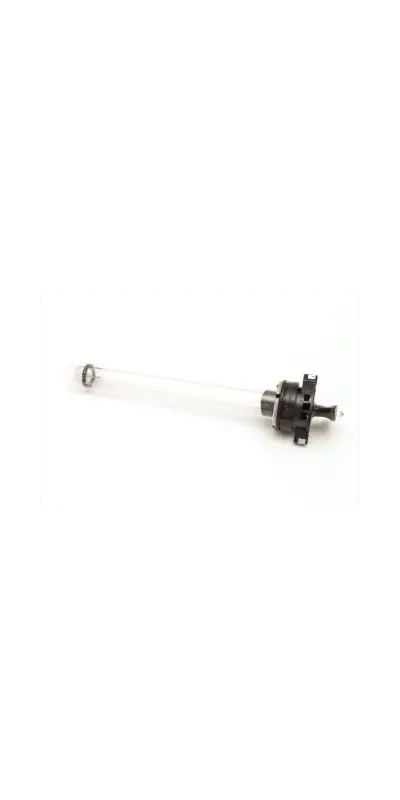
UV Filter Bulb

Certifications
Minimum: NSF/ANSI 55
Costs
.
$200 – $1,000
Companies
Pentair, Viqua, quality water treatment?

UV Filter Bulb
Installation Options
Whole House, Point of use

Replacement Life
5,000 – 10,000 hours of bulb life

Contaminants Removed
99.9% of microorganisms including: E. coli, Cryptosporidium and Giardia
